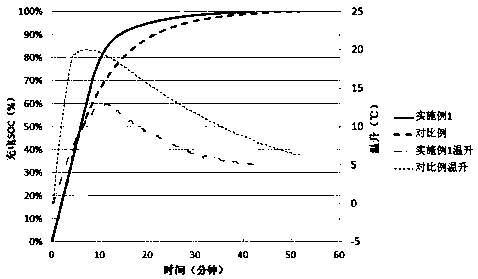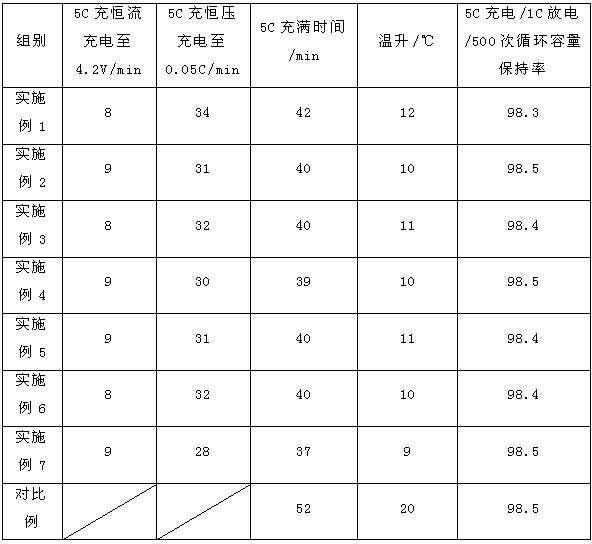A fast-charge lithium-ion secondary battery
A secondary battery, lithium ion technology, applied in secondary batteries, battery electrodes, circuits, etc., to achieve the effect of ensuring safety performance
- Summary
- Abstract
- Description
- Claims
- Application Information
AI Technical Summary
Problems solved by technology
Method used
Image
Examples
Embodiment 1
[0019] In this example, a lithium ion secondary battery is provided.
[0020] The positive electrode system is composed of the following components by mass fraction: 30% lithium manganate, 25% nickel-cobalt lithium manganate, 30% nickel-cobalt lithium aluminate, 10% lithium titanate, and 5% lithium-containing oxide of M. The lithium-containing oxides of M include 2% lithium-containing oxides of potassium and 3% lithium-containing oxides of vanadium.
[0021] The negative electrode system is composed of the following components by mass fraction: 35% bamboo charcoal powder, 25% polysilicon, 25% germanium material, and 15% gallium compound. 10%.
[0022] In the lithium ion battery in this example, the electrolyte of the electrolyte is a mixture of lithium hexafluorophosphate and lithium tetrafluoroborate; 2,4-dinitroaniline and fluoroethylene carbonate are added to the additives.
[0023] Of course, the additives in the electrolyte solution of the lithium battery can be at leas...
Embodiment 2
[0026] Compared with Example 1, the lithium-ion battery in this example is different in that the positive electrode system of the lithium-ion battery in this example is composed of the following components in mass fraction: 25% lithium manganate, nickel-cobalt 30% lithium manganate, 20% lithium nickel cobalt aluminate, 12% lithium titanate, 10% lithium-containing oxides of M, and 3% gallium oxides, among which lithium-containing oxides of M include lithium-containing oxides of cesium2 %, praseodymium lithium-containing oxide 2%, rubidium lithium-containing oxide 6%; gallium compounds include gallium arsenide 1%, gallium telluride 2%.
Embodiment 3
[0028] Compared with Example 1, the lithium-ion battery in this example is different in that the positive electrode system of the lithium-ion battery in this example is composed of the following components in mass fraction: lithium manganate 35%, nickel-cobalt-manganese 15% lithium oxide, 25% lithium nickel cobalt aluminate, 15% lithium titanate, 6% lithium-containing oxides of M, and 4% gallium oxides, among which, lithium-containing oxides of M include 1% lithium-containing oxides of potassium , 2% lithium-containing oxide of tungsten, 1% lithium-containing oxide of erbium, 1% lithium-containing oxide of rubidium, 1% lithium-containing oxide of europium; gallium compounds include gallium telluride 1%, gallium antimonide 2 %, gallium selenide 1%.
PUM
 Login to View More
Login to View More Abstract
Description
Claims
Application Information
 Login to View More
Login to View More - R&D
- Intellectual Property
- Life Sciences
- Materials
- Tech Scout
- Unparalleled Data Quality
- Higher Quality Content
- 60% Fewer Hallucinations
Browse by: Latest US Patents, China's latest patents, Technical Efficacy Thesaurus, Application Domain, Technology Topic, Popular Technical Reports.
© 2025 PatSnap. All rights reserved.Legal|Privacy policy|Modern Slavery Act Transparency Statement|Sitemap|About US| Contact US: help@patsnap.com


